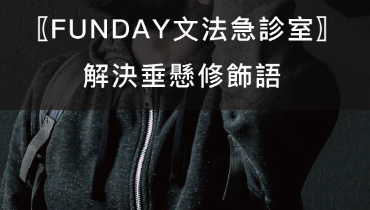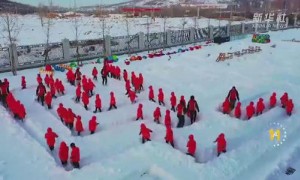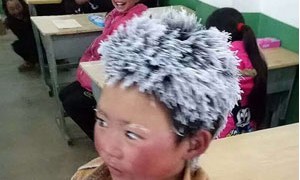这个问题的成因就是修饰语所要修饰的对象不明确,而造成句意逻辑不通、前后不一致的语法结构,有时候会造成对于句子或是前后文理解上的障碍。
以下就来看看几种类型:
✦ 最常见的类型为该修饰对象根本不见,这样的修饰语通常会包含动词:
例句:Turning to the right, our school is right next to the fire station. - 向右转,我们的学校就在消防局正旁边。
☞ 这个向右转的动作,应该属于人的动作,但后方主要子句的主词却是不可能向右转的「学校」。
例句:While waiting at the bus station, the bus schedule has been changed. - 在巴士站等公车时,时刻表被换了一张。
☞ 也是一样的问题,没有讲出是谁在等公车,而等公车的动作也不可能是后方的主词所执行。 。
例句:Being given a car by my father, it now needs washing. - 爸爸把一辆车送给我,现在需要好好洗一洗。
☞ 后面的it指的应该是修饰语中的车,但修饰语的主词应该是说话者。
例句:At the age of seven, my family moved to the other country. - 七岁的时候,我们全家搬去了另一个国家。
☞ 究竟是谁七岁的时候搬了家,应该是说这句话的人,但后面的主词却变成我们家,这样理解上就会变成「我们家七岁的时候……」,造成混淆。

✦ 垂悬修饰语有时会出现在句尾:
例句:The date turned out to be a total bummer, finding out that the guy was actually twenty years older than me. - 这约会真是太扫兴了,发现那个对象其实比我大二十岁。
☞ 即使出现在句尾,主词不一致的状况也是一样,造成前后理解逻辑上的紊乱。
✦ 修饰语缺失主词的情况,就会变成悬在那里,因此称为垂悬修饰语。
“解决垂悬修饰语的方法”
一、把消失的主词加上去,完整句子的逻辑。
二、加上能够真正完整语意的辅助词汇。
三、直接将两句整并成语意完整一句话。
接着我们就拿上述范例来修正:
● 例句:Turning to the right, our school is right next to the fire station. - 如果你向右转,就会看到我们的学校就在消防局正旁边。
要加上能完整前面动作的主词 ☞ Turning to the right, you’ll see that our school is right next to the fire station.
或可以进一步还原成 If you turn to the right, you’ll see that… 来完整语意。
● 例句:While waiting at the bus station, the bus schedule has been changed. - 我在巴士站等公车时,时刻表被换了一张。
一样是加上完整前面动作的主词 ☞ While I’m waiting at the bus station, the bus schedule is changed.
● 例句:Being given a car by my father, it now needs washing. - 我现在需要洗这台爸爸送我的车。
直接将原本前句的主词加上,并将原句后面的 it 变成受词 ☞ I, being given a car by my father, now needs to wash it.
● 例句:At the age of seven, my family moved to another country. - 我们家在我七岁时就搬去了另一个国家。
直接整并成一句话并将遗失的主词加上 ☞ My family moved to another country when I was at the age of seven.
● 例句:The date turned out to be a total bummer, finding out that the guy was actually twenty years older than me. - 这约会真是太扫兴了因为我发现那个对象其实比我大二十岁。
加上完整因果关系的because,并补上主词 ☞ The date turned out to be a total bummer because I found out that the guy was actually twenty years older than me.
-----
日后大家在写作时,一定要注意前后句子的逻辑连贯性以及当中被修饰的主词,并重新审视句子所要表达的意思,好避免垂悬修饰语的状况发生,不可以让修饰语孤零零的悬而未决哟,那最后也给大家一些练习,来看看大家会怎么改。
● 例句:After playing the ping pong, the ping pong ball was dented.
☞ After playing the ping pong, we dented the ping pong ball.
打完乒乓球后,我们把乒乓球给打凹了。
● 例句:The commercial was a disaster, not having conducted a full marketing research on our target audience.
☞ We made an unsuccessful commercial, not having conducted full marketing research on our target audience.
在没有对目标族群进行全面的行销调查情况下,我们做了一个相当失败的广告。
● 例句:Without meeting him in person, it is hard to imagine how good-looking he is.
☞ It is hard to imagine how good-looking he is since I haven’t met him in person.
很难想像他长得到底多好看,因为我还没有亲自见过他本人。







